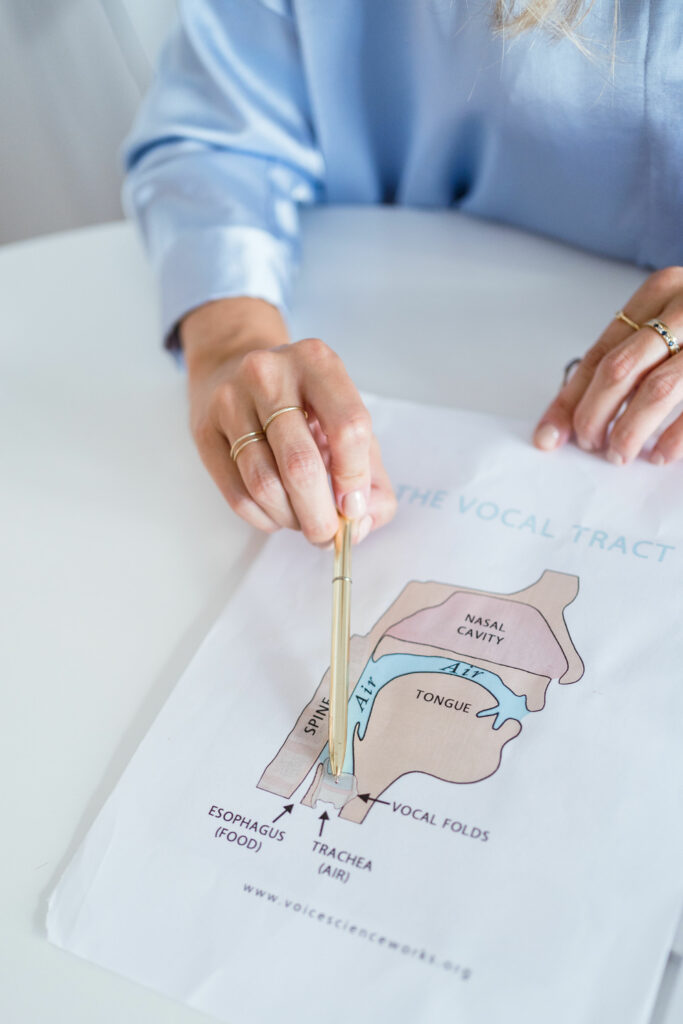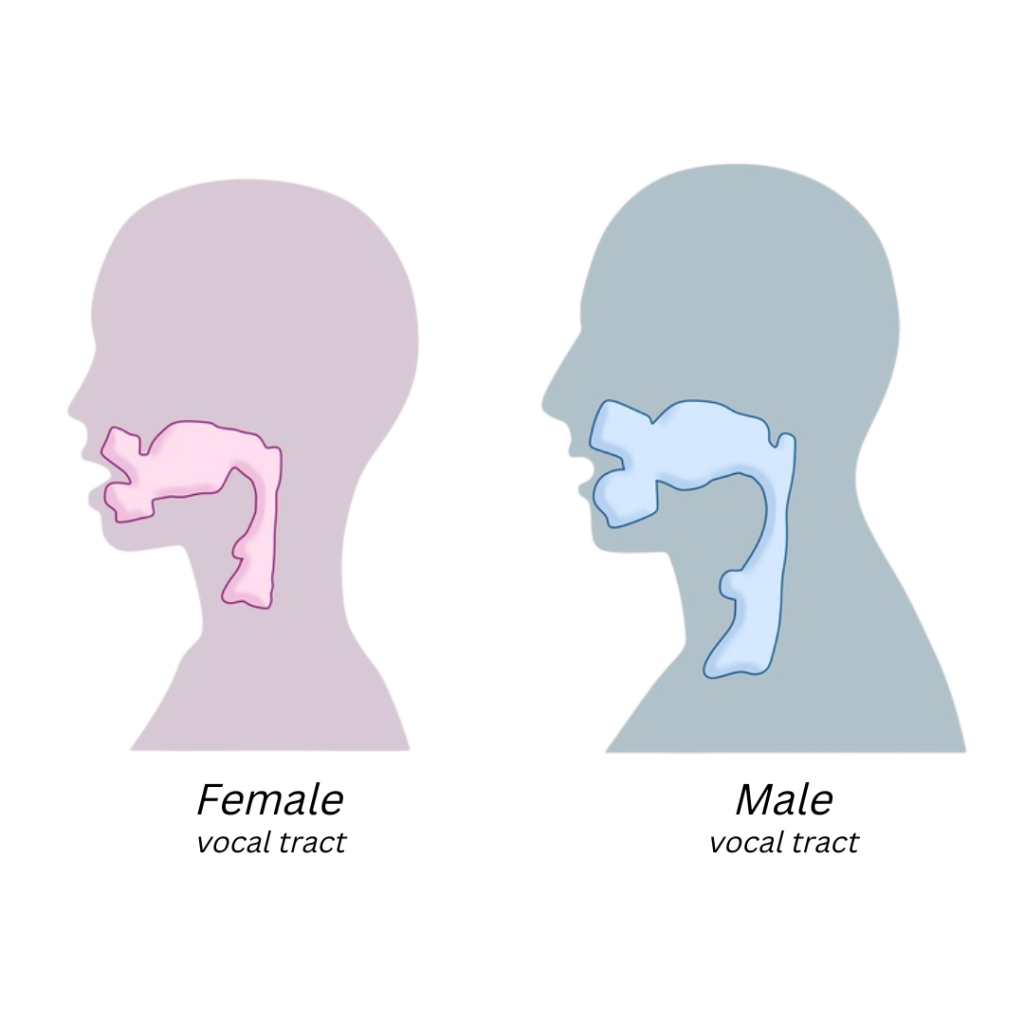Voice therapy goals
for transgender and non binary individuals



Healthy and flexible voice
Developing and maintaining a healthy, natural sustainable voice requires care. You need to have a solid understanding of vocal anatomy and physiology, as well as important factors in maintaining vocal health: adequate hydration, deactivation of muscle tension and healthy use of the vocal instrument.
How high or how low is your voice?
Pitch or frequency refers to how high or low a person speaks. This is determined by how fast the vocal folds are vibrating. The average woman speaks in an average range between approximately 165Hz-220Hz, while the average man speaks in an average range between approximately 90Hz-130Hz. A voice that might be identified as gender ambiguous is generally in the area of 165Hz. While pitch is the initial auditory identifier for gender, it is not the only one factor. Simply having a higher or lower voice does necessarily change the perception of a different gender.

Intonation
The rise and the fall of voice in conversation also contributes the the listener’s perception gender. While there is wide range of variability within and across genders, largely speaking, the female voice has wider amplitude of change (shift) than the male voice, which tends to be flatter. It is not necessarily the case that women inflect more often than men, however, the style of inflection is different.
Resonance (timbre)
Resonance can be described as the tone quality and placement of the sound. It is the result of different harmonics blending together and being influenced by different textures, surfaces and sizes, breath support and levels of articulatory tension. Two different guitars might sound different as a result of being a slightly different size, being made of different wood, the sound hole being a different size, or the way a string is plucked or strummed. So too with the human voice – it is played within a vessel of different size, shape and textures. In general, the female voice tends to have a heady more forward focused tone while the male tone tends to “play” more in the chest or lower throat. Light and dark are other words that might be employed in the difference in tone. Resonance, along with voice quality, is one of the aspects of voice that help a listener recognize an individual’s personal sound.

Non-speech communication
Techniques will be learned to cough, clear the throat, laugh and sneeze with a sound that matches gender identity.
Verbal and non-verbal communication
Women and men express themselves in different ways. Society is, however, slowly moving towards greater non-conformity, an a less binary perception of communication. Semantics need to be explored from an individual, gender and cultural standpoint.
We are evolving towards fewer gender stereotypes, but people continue to associate certain nonverbal communication with one or the other gender. Working on movement, posture, gesture, eye contact, personal space and touch can help a person to feel more aligned with their gender identity. It is important, as with all aspects of communication, to learn a nonverbal communication vernacular that fits not only gender identity, but culture and personality.
Recourse:
Voice and Communication Therapy for the Transgender/Transsexual Client: A Comprehensive Clinical Guide by Richard K. Adler, Sandy Hirsch, Michelle Mordaunt (2012)

